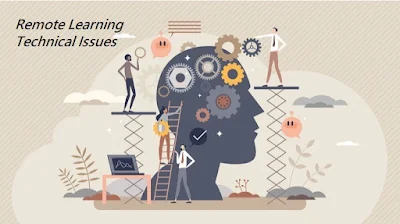Introduction
Remote learning has transformed the education landscape, offering students the flexibility to learn from anywhere. However, technical issues can arise, hindering the learning experience. In this article, we will delve into the common technical issues that may arise in remote learning and provide expert solutions and best practices to overcome them. By the end of this article, you will be equipped with the knowledge and skills to handle technical issues with ease, ensuring a seamless and successful online learning journey.
Common Technical Issues in Remote Learning
Transition: Before we explore the solutions, it's essential to identify the common technical issues that may arise in remote learning.
- Connectivity Issues: Difficulty connecting to the internet or online learning platform.
- Poor
Video Quality: Low-resolution or grainy video feed during virtual classes.
- Audio Issues: Difficulty hearing or being heard during virtual classes.
- Difficulty Accessing Online Resources: Trouble accessing digital materials, such as e-books or online tutorials.
- Troubles with Submission of Assignments: Issues uploading or submitting assignments through the online learning platform.
- Software Compatibility Issues: Incompatibility between the online learning platform and your device's operating system or software.
- Browser Issues: Problems with accessing the learning platform due to browser incompatibility or outdated browser versions.
- Password and Login Problems: Difficulty logging into the online learning platform due to forgotten passwords or incorrect login details.
- Device Malfunctions: Hardware issues such as a malfunctioning camera, microphone, or keyboard.
Solutions to Technical Issues
Transition: Now that we have identified the common technical issues, let's explore the solutions to overcome them.
- Connectivity Issues: Restart your router, check your internet connection, and contact your internet service provider if necessary.
- Poor Video Quality: Adjust your camera settings, ensure adequate lighting, and consider upgrading your camera.
- Audio Issues: Check your audio settings, use a headset or earbuds, and ensure your microphone is working properly.
- Difficulty Accessing Online Resources: Check your login credentials, ensure you have the necessary software, and contact your instructor if necessary.
- Troubles with Submission of Assignments: Check your internet connection, ensure you have the necessary software, and contact your instructor if necessary.
- Software Compatibility Issues: Ensure your device's operating system and software are up-to-date, and use recommended software for the learning platform.
- Browser Issues: Use a compatible and updated browser, and clear your browser's cache and cookies if you encounter issues.
- Password and Login Problems: Use password management tools to keep track of login details and reset your password if necessary.
- Device Malfunctions: Regularly maintain your hardware, seek professional repair services if needed, and keep backup devices handy.
Best Practices to Avoid Technical Issues
Transition: By following these best practices, you can avoid technical issues and ensure a smooth remote learning experience.
- Regularly Update Your Software and Operating System: Ensure you have the latest updates installed to avoid compatibility issues.
- Use a Reliable Internet Connection: Invest in a stable internet connection to avoid connectivity issues.
- Invest in Good Quality Audio and Video Equipment: Upgrade your camera and microphone for better video and audio quality.
- Familiarize Yourself with the Online Learning Platform: Explore the platform before classes begin to avoid technical issues.
- Contact Your Instructor or Technical Support if Necessary: Don't hesitate to reach out for help if you encounter any technical issues.
- Create a Troubleshooting Checklist: Prepare a list of common issues and their solutions to quickly address problems as they arise.
- Maintain a Backup Plan: Have alternative devices and internet sources available in case of primary device or connection failure.
- Educate Students on Basic Troubleshooting: Teach students how to handle simple technical issues to reduce dependency on external help.
- Schedule Regular Breaks: Encourage breaks to reduce the strain on devices and internet connections, improving overall performance.
- Use Cloud Storage for Important Documents: Store critical files on cloud platforms to ensure access from any device in case of technical issues.
Conclusion
In conclusion, remote learning technical issues can be frustrating, but they can be easily overcome. By identifying the common technical issues and implementing the solutions and best practices outlined in this article, you can ensure a successful and stress-free online learning experience. Remember, technical issues are inevitable, but with the right mindset and resources, you can overcome them and achieve your learning goals.






0 Comments